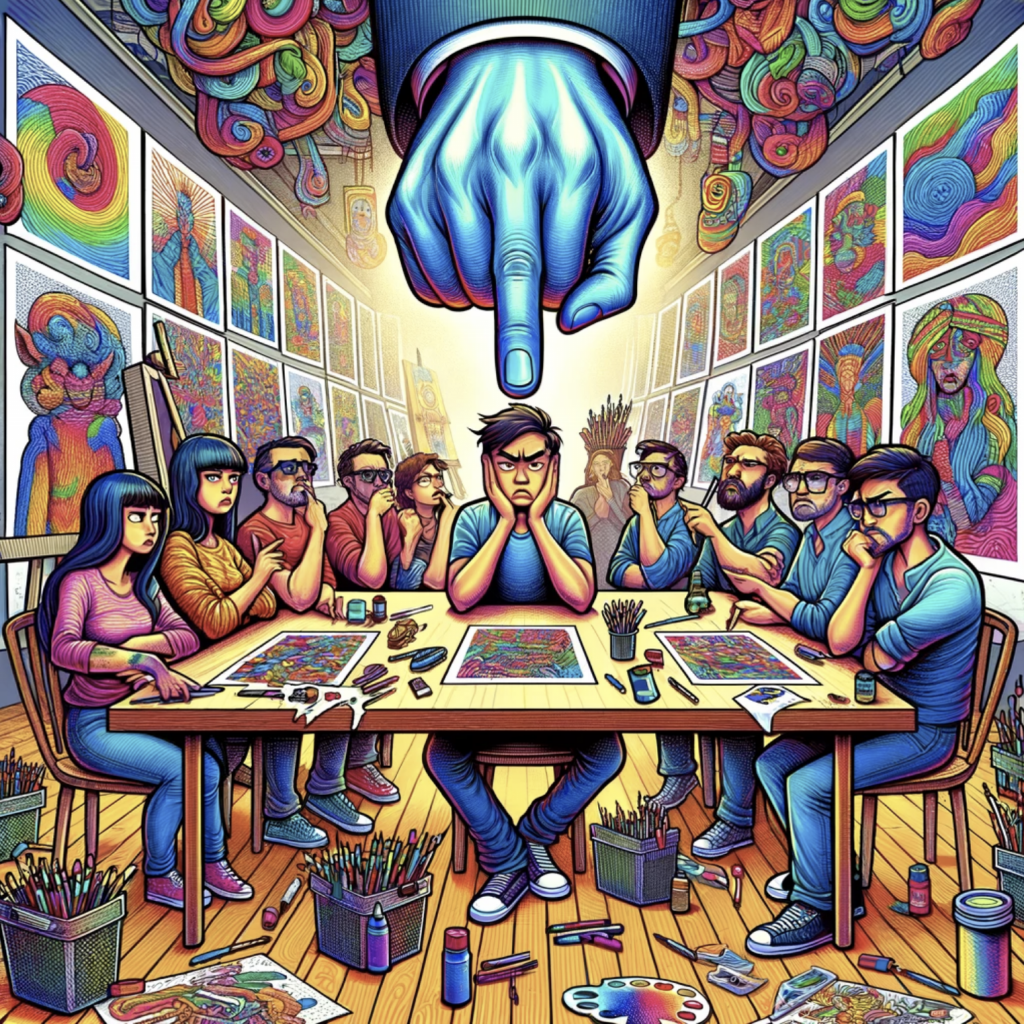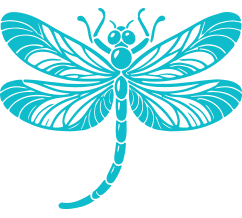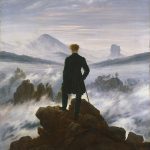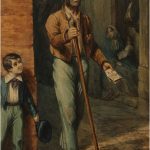
Imagine walking into a room buzzing with creativity, where every corner is a hive of artistic activity. Art collectives have long been celebrated as spaces where artists come together to share ideas, resources, and inspiration. These groups can often push the boundaries of art, fostering innovation and collaboration in ways that solo efforts might not achieve. But do these collectives truly represent a democratic form of art creation, or do they sometimes fall into the trap of groupthink, where conformity stifles individuality?
Art collectives have a rich history of challenging the status quo and fostering artistic revolutions. From the early days of the Pre-Raphaelite Brotherhood to the avant-garde Dadaists, these groups have left an indelible mark on the art world. They have been instrumental in pushing forward new ideas and breaking away from traditional norms. Yet, the dynamics within these groups can be complex and, at times, contentious.
In this exploration, we’ll delve into the world of art collectives, examining their historical significance and the dynamics that drive them. We’ll look at the appeal of these groups, the benefits they offer, and the potential downsides of collective creation. By the end, you’ll have a deeper understanding of whether art collectives are beacons of democratic creativity or susceptible to the pitfalls of groupthink.
Historical Context
Art collectives have been around for centuries, often emerging during periods of significant social and cultural change. The Pre-Raphaelite Brotherhood, formed in 1848, sought to return to the detail and vibrant colors of pre-Renaissance art. This group challenged the academic norms of their time, promoting a new aesthetic that would influence generations to come. Their collaboration was marked by a shared vision and mutual support, leading to a prolific output that redefined British art.
Fast forward to the early 20th century, and we see the rise of the Dadaists, a radical collective born out of the chaos of World War I. Dadaists rejected conventional art and embraced absurdity and anti-art sentiments. Their work was a direct response to the horrors of war and a critique of the bourgeois society that they believed led to such conflicts. This collective approach allowed them to amplify their dissenting voices and impact the broader art world profoundly.
Similarly, the Surrealists in the 1920s and 1930s used collective activities to explore the unconscious mind and dream imagery. Led by André Breton, the Surrealists held group sessions to generate automatic writing and collaborative artworks. This collective exploration led to some of the most iconic and influential works of the 20th century. The Surrealists’ group dynamic was essential in fostering an environment where unconventional ideas could flourish.
These historical examples highlight how art collectives have often been at the forefront of artistic innovation. By banding together, artists have been able to challenge norms, support each other, and create movements that leave lasting legacies. However, the success of these collectives also depended on a delicate balance of collaboration and individual expression. This balance is crucial in understanding the dynamics and potential pitfalls of art collectives.
The Appeal of Art Collectives
One of the main appeals of art collectives is the opportunity for collaboration and shared resources. Artists working together can pool their talents, tools, and ideas, often resulting in more ambitious projects than they could achieve individually. This collaborative environment can lead to the cross-pollination of ideas, where each member’s unique perspective enriches the group’s output. The collective nature of these groups also fosters a sense of community and belonging, which can be incredibly motivating.
In addition to creative collaboration, art collectives offer practical benefits. Shared studio spaces, materials, and exhibition opportunities can significantly reduce individual costs and barriers to entry. For emerging artists, joining a collective can provide much-needed exposure and support. Established artists, on the other hand, might find new inspiration and energy from working closely with their peers.
The diversity of ideas and skills within a collective is another significant advantage. When artists from different backgrounds and disciplines come together, the resulting work can be more innovative and multifaceted. This diversity can lead to groundbreaking projects that might not have been possible within a more homogeneous group. Moreover, the collective’s varied perspectives can help artists see their work from new angles and push their boundaries.
Finally, being part of a collective can enhance visibility and opportunities for artists. Groups often organize exhibitions, events, and collaborative projects that draw more attention than individual efforts. This increased exposure can lead to new opportunities, such as gallery representation, commissions, and media coverage. By working together, artists can achieve a higher profile and greater impact than they might alone.
The Dynamics Within Art Collectives
The dynamics within art collectives can be complex, balancing individual creativity with group goals. Decision-making processes often vary, from democratic voting to more hierarchical structures with designated leaders. Each approach has its pros and cons, and finding the right balance is crucial for the collective’s success. Ensuring that all members feel heard and valued can be a delicate task, requiring strong communication and conflict resolution skills.
Balancing individual creativity with group goals is another challenge. While the collective aims to create a cohesive body of work, each artist must also maintain their unique voice. This balance is essential for the collective’s success, as it prevents the stifling of individual expression. Encouraging personal projects alongside group endeavors can help maintain this equilibrium.
Conflicts and differing visions are inevitable in any group setting. Art collectives are no exception, and managing these disagreements is key to their longevity. Open communication, mutual respect, and a willingness to compromise are crucial in navigating these challenges. When handled well, conflicts can lead to growth and new directions for the collective.
Managing egos is another significant aspect of collective dynamics. Artists often have strong personalities and distinct artistic visions, which can lead to clashes. Ensuring that everyone feels equally valued and respected can help mitigate these issues. Leadership within the collective must be adept at fostering an inclusive and supportive environment to keep the group cohesive and productive.
Case Studies
The Bauhaus, founded in 1919 by Walter Gropius, is a prime example of a successful art collective that fostered democratic art education and creation. The Bauhaus brought together artists, architects, and designers to create a holistic approach to art and design. Their collaborative efforts led to innovations that continue to influence modern design and architecture. The school’s emphasis on combining fine arts with crafts democratized art by making it more accessible and functional.
Another notable collective is Fluxus, an international network of artists, composers, and designers founded in the 1960s. Fluxus emphasized the artistic process over the finished product, often engaging in performance art and experimental media. The collective’s open, inclusive nature allowed for a wide range of creative expressions, challenging traditional art forms. Fluxus’ playful and experimental approach continues to inspire contemporary artists and collectives.
The Guerrilla Girls, an anonymous group of feminist artists formed in 1985, used their collective identity to challenge the male-dominated art world. By wearing gorilla masks and adopting pseudonyms, they drew attention to issues of gender and racial inequality in the arts. Their provocative posters and public actions highlighted the disparities and demanded change. The Guerrilla Girls’ collective approach amplified their message and made a significant impact on the art world.
These case studies illustrate the diverse ways in which art collectives can operate and succeed. From the structured environment of the Bauhaus to the experimental nature of Fluxus and the activist stance of the Guerrilla Girls, each collective found a unique way to harness the power of collaboration. Their successes demonstrate the potential of art collectives to foster innovation and drive social change. However, they also highlight the importance of finding the right balance between group dynamics and individual expression.
The Downside: Groupthink in Art Collectives
While the benefits of art collectives are numerous, they are not immune to the pitfalls of groupthink. Groupthink occurs when a desire for harmony or conformity results in irrational decision-making. In the context of art collectives, this can lead to a homogenization of ideas and stifled creativity. When members prioritize consensus over innovation, the collective’s output can become predictable and less impactful.
Groupthink can also suppress dissenting voices within the collective. Artists who feel pressured to conform to the dominant ideas may hold back their unique perspectives. This suppression can lead to frustration and disengagement, weakening the collective’s overall creativity. Ensuring that all members feel comfortable expressing their opinions is crucial for maintaining a vibrant and dynamic group.
Examples of art collectives falling into groupthink traps can be seen in various historical and contemporary contexts. Some movements have become rigid in their ideologies, discouraging experimentation and divergence. This rigidity can limit the collective’s growth and adaptability, ultimately diminishing its relevance. Avoiding these pitfalls requires a conscious effort to embrace diversity and encourage open dialogue within the group.
To combat groupthink, art collectives must foster an environment that values diversity and critical thinking. Encouraging members to challenge ideas and propose alternatives can keep the collective’s work fresh and innovative. Regularly rotating leadership roles and decision-making responsibilities can also help prevent the concentration of power and ideas. By actively promoting a culture of inclusion and critical reflection, art collectives can avoid the downsides of groupthink and continue to thrive.
Modern Perspectives
Today’s art collectives are evolving to address the challenges of groupthink and embrace new ways of collaboration. Digital and virtual collectives have emerged, leveraging technology to connect artists from around the world. These platforms offer new opportunities for collaboration, allowing for a broader exchange of ideas and perspectives. The digital age has also democratized access to resources and audiences, making it easier for collectives to gain visibility.
Contemporary collectives often emphasize inclusivity and diversity, actively seeking to incorporate a wide range of voices and experiences. By prioritizing these values, modern collectives aim to foster environments where creativity can flourish without the constraints of conformity. This approach helps mitigate the risks of groupthink and ensures that the collective’s work remains dynamic and relevant. Examples of such collectives include Meow Wolf and the Black Lunch Table, both of which prioritize community engagement and diverse participation.
The rise of interdisciplinary collectives is another trend in the modern art world. These groups bring together artists, scientists, technologists, and other professionals to collaborate on projects that transcend traditional art forms. By breaking down disciplinary boundaries, these collectives create innovative works that address complex contemporary issues. The convergence of different fields fosters a rich environment for creativity and problem-solving.
As we move forward, the future of art collectives looks promising, with new models and approaches continuing to emerge. The challenges of maintaining a balance between individual expression and group dynamics will always be present. However, by embracing diversity, fostering open communication, and leveraging technology, art collectives can continue to be powerful engines of innovation. The potential for these groups to drive artistic and social change remains as strong as ever.
Conclusion
Art collectives have played a crucial role in shaping the art world, from historical movements to contemporary innovations. Their collaborative nature offers numerous benefits, from shared resources to diverse ideas. However, the dynamics within these groups must be carefully managed to avoid the pitfalls of groupthink. By fostering an inclusive and open environment, art collectives can continue to thrive and push the boundaries of creativity.
The balance between democratic art creation and the risk of conformity is delicate but achievable. As we’ve seen through various case studies and modern perspectives, successful collectives prioritize open dialogue and diverse participation. This approach not only enhances the collective’s creativity but also ensures its longevity and relevance. As art collectives evolve, their potential to drive artistic and social change remains vast and inspiring.
Ultimately, the power of art collectives lies in their ability to bring together diverse talents and perspectives. Whether through historical movements or modern digital platforms, these groups have the potential to create groundbreaking work and foster innovation. By learning from past successes and failures, contemporary collectives can navigate the challenges of group dynamics and continue to make significant contributions to the art world.
So, what do you think? Are art collectives the ultimate democratic art form, or do they risk falling into the trap of groupthink? Share your thoughts and experiences with us. Let’s keep the conversation going and continue to explore the fascinating world of art collectives together.
Thanks for joining me on this journey through the world of art collectives. Your thoughts and insights are always welcome, so feel free to drop a comment or share this article with fellow art lovers. Until next time, keep creating and challenging the status quo. Happy art-making!







